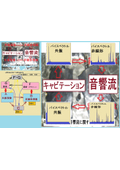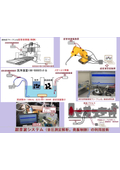Developed a technology to measure, analyze, and evaluate the interaction of ultrasonic vibrations.
The Ultrasonic System Research Institute has developed technology to measure, analyze, and evaluate various interactions by analyzing time-series data through ultrasonic sound pressure measurements. As a result, it has evolved into a technology that optimizes ultrasonic utilization conditions based on interaction evaluations.
Specifically, there are the following examples:
1) Optimization of selection criteria for ultrasonic oscillation frequency and output level
2) Optimization of ultrasonic oscillation control conditions
3) Optimization regarding the installation of tanks and ultrasonic (transducers)
4) Optimization of liquid circulation devices and control conditions
5) Optimization of design conditions for tanks and ultrasonic systems
6) Optimization of cleaning solutions, detergents, solvents, etc.
7) Optimization with adjacent tanks, jigs, etc.
It is possible to develop original ultrasonic systems tailored to specific purposes.
Ultrasonic propagation characteristics:
1) Detection of vibration modes (changes in autocorrelation)
2) Detection of nonlinear phenomena (changes in bispectrum)
3) Detection of response characteristics (analysis of impulse response)
4) Detection of interactions (analysis of power contribution rates)
Note: "R" is a free statistical processing language and environment.
autcor: autocorrelation
bispec: bispectrum
mulmar: impulse response
mulnos: power contribution rate


Inquiry about this news
Contact Us OnlineMore Details & Registration
Details & Registration
Related Documents
Related Links
Technology for evaluating ultrasonic interactions
Related product
Related catalog(14)































